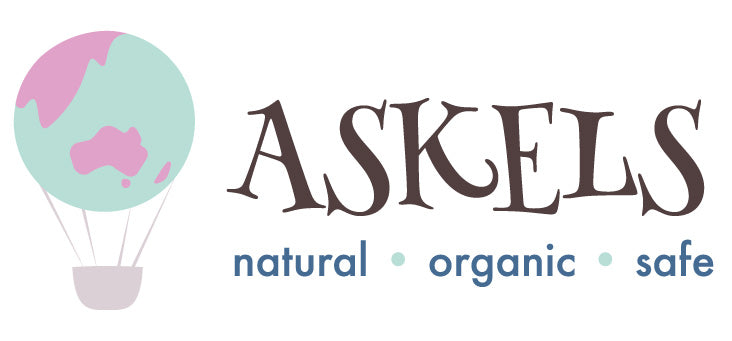DRY PAIL/DEALING WITH SOILED NAPPIES
Use a dry vessel/pail with holes for aeration. An example of this would be a plastic washing hamper with a lid. This may seem strange but an enclosed container will encourage ammonia production which is what creates a smell and can damage your nappies.
It sounds crazy but an open, airy dry pail is the best way to reduce smells. Separate boosters, inserts etc from the nappy before placing them in the dry pail. Follow the below guide for how to treat your different types of soiled nappies.
- Pee nappies - place straight into your dry pail;
- Poo nappies:
- With a fleece liner the solid poo will roll off into the toilet. If the poo is somewhat less than solid, you’ll need to rinse the nappy, which can be done easily with a nappy sprayer, which is a hose that connects to your toilet via the water valve behind the toilet;
- A biodegradable liner is another option, although many manufacturers will say these can be flushed, it's unwise to flush anything other than toilet paper. It's best to throw these away.
- Night nappies (or nappies that have been in use for longer than 4 hours) contain a greater amount and concentration of urine. A separate, thorough hand-rinse in hot water with detergent, in the morning, is recommended. Then dry pail as normal.
WASH
- We recommend a two-step wash system using good-quality mainstream detergent, It may be a good idea to steer clear of detergents with additives designed to stay in the fabric after the wash, like softeners (which can reduce absorbency) and brighteners or fragrances (which might cause issues for a baby’s sensitive skin);
- Pre-wash: Use a short cycle with half the recommended dose of detergent for a heavily soiled load. A pre-wash cycle removes the bulk of the soiling so that the main wash is done in clean water;
- Main Wash: Use the longest cycle on your machine with the full dose of detergent for a heavily soiled load, up to 60°C;
- Washing nappies every other day helps to prevent smells, ammonia and mould from developing and deteriorating fabrics;
- A daily prewash can be helpful in certain situations to ensure fabrics remain in good condition. To do a daily prewash simply prewash that day’s nappies, then return them to the dry pail. The next day, do the same with that day’s nappies followed by the main wash with all the prewashed nappies;
- Do not spin over 800rpm as that can cause undue stress on the elastics. This is most likely only an issue with top loaders that contain agitators but elastics can be a bit of a mystery so to play it safe we recommend a maximum 800rpm spin speed.
DRY
- Line drying is best for the environment and easier on the budget;
- For nappies that contain elastics be conscious of how they are hung, so the elastics are not being stretched while drying. Hanging them lengthways across the line can prevent additional wear and tear;
- Hang covers/shells in the shade, or indoors. Octopus pegs may be helpful;
- If line drying isn’t possible, use the dryer on the lowest setting for shells, waiting until they are cold before using and stretching elastics;
- Using the dryer occasional won’t hurt however try to keep these times to a minimum;
- Heat will cause damage to the waterproofing, elastics and natural fibres of nappies in the long term so during the summer months hang your nappies and shells in the shade or inside.
